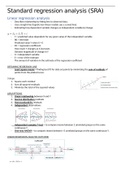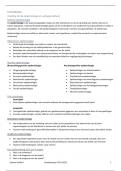Samenvatting
VU Master Health Sciences: Advanced Statistics - Summary lectures and literature: How to analyse clustered and longitudinal data and how to interpret the results?
- Instelling
- Vrije Universiteit Amsterdam (VU)
All the practical information on clustered data and longitudinal data in a very compact version. How to apply the appropriate analysis step by step? How to interpret the results? - General information about Standard regression analysis (linear and logistic), Clustered data and Longitudinal data. Ba...
[Meer zien]






